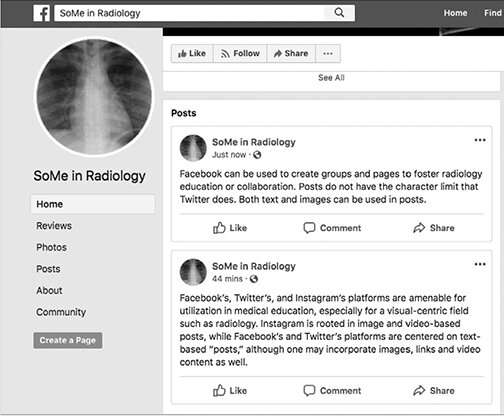

Bradley Spieler, MD, Vice Chairman of Radiology Research at LSU Health New Orleans School of Medicine, is the lead author of a Radiology Research Alliance paper examining the usefulness of social media in Radiology. It is published online as an Article in Press online in Academic Radiology.
As a visual discipline, Radiology lends itself to social media. The authors examine the advantages and challenges of various social media platforms—Twitter, Facebook, LinkedIn and Instagram, YouTube, Snapchat and ResearchGate among others—for different purposes in Radiology.
“Social media can be a valuable educational and communication tool that medical professionals can use to enhance career development, specifically as it relates to the dissemination of knowledge, brand development, collaboration, mentorship and recruitment,” notes Dr. Spieler, who is also an Associate Professor of Radiology, Internal Medicine, Urology, & Cell Biology and Anatomy at LSU Health New Orleans.
The authors found that LinkedIn, Facebook, Twitter and Instagram are well suited to education. They write, “Radiologists can post educational content, cases, videos, and articles for rapid dissemination to a broad audience across the globe.” They cite Facebook posts of weekly case material as well as Tweet chats on Twitter. These platforms also facilitate building a global community around topics through the use of hashtags by organizing content across multiple accounts.
They highlighted YouTube as a rich platform to disseminate educational content including lecture series, case conferences, short educational videos on various imaging modalities, radiographic anatomy, and specific clinical radiology cases, among other content.
Challenges include maintaining patient privacy by de-identifying patient images and data to conform to HIPPA regulations.
The authors explore how social media can be used for professional development, from creating personal accounts with specialized content to building a profile on LinkedIn. Being recognized as a topic authority or expert can be important to promotions and academic advancement. While these powerful tools offer great opportunity, a potential downside of this professional networking and branding via social media is the potential to project oneself in an unprofessional manner, now known as e-professionalism, particularly when accounts also include personal and social activities.
Social media interaction can facilitate mentoring as well. Social media connections can serve as a possible avenue to access radiology leaders when they are not physically present within one’s radiology department or professional group.
The authors also note opportunities for greater networking and collaboration. Social media can connect people who have never met but who may have a mutual interest in a project or research as a collaborator or sponsor. ResearchGate offers the ability to share information with others in the research community and easily find relevant information. Users are cautioned to check copyrights for shared material.
They advise radiologists and students to use social media with the knowledge that colleagues, mentors, current and future employers, supervised trainees, patients, and lawyers involved in litigation may view content posted on social media. They caution users to be mindful that the information disseminated is within an individual’s scope of expertise and that material be verified to avoid perpetuating misinformation.
The paper contains examples of professional and non-professional posts.
Source: Read Full Article